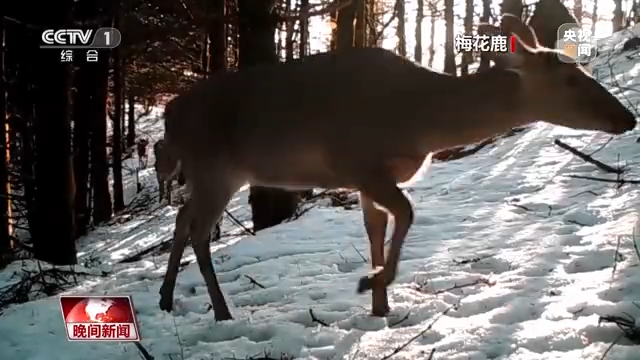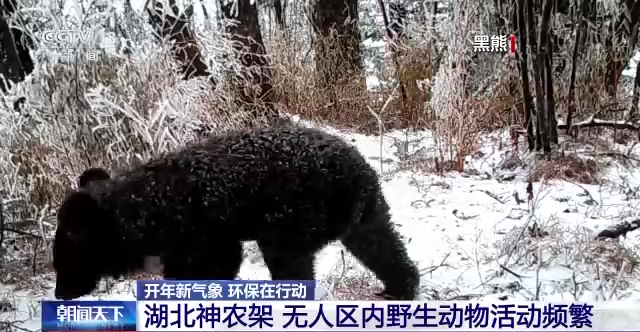Wildlife Active in Uninhabited Area of Shennongjia
Updated:2023-05-16 Source:CCTV News
The Shennongjia area in Hubei Province is a transitional area for plant species from the north and south of China, and is also a crossover zone where many rare animals thrive. To better investigate and monitor wild animals, 300 additional high-definition infrared cameras were installed in the Shennongjia Forestry District in 2022. Half a year has passed, they are showing pleasant results.
Recently, to collect the images captured by cameras and also to prepare for the upcoming monitoring of wildlife breeding, the staff of the Forestry District went deep into the uninhabited area to collect the first-hand information of wildlife.
To capture the images of more rare animals, the new infrared cameras were intentionally set up in areas without human activities, hidden in deep forests and uninhabited areas at high altitude, remote and difficult to travel. The other day, spring snow fell in this area. The rugged snowy roads and the hidden locations of the cameras made them harder to be found.

Finally, one was found after more than half an hour of searching with memory. The process was tough but rewarding.

Ma Guofei, an engineer of the Scientific Research Institute of the Administration of Shennongjia National Park, said that the camera took 240 high-quality pictures of animals, which indicated at least 240 animal visits.

After a day of searching, the staff collected recorded footage from more than 20 infrared cameras. By archiving these videos and pictures, the images of those creatures hidden in the deep forests were available to people. The staff said that the cameras collected a large number of materials of wildlife in many species. It was especially rare that in these photos and videos, there were scenes where baby animals appeared with their parents, showing that wildlife is thriving in the Shennongjia area.

Yu Huiliang, Deputy Director of the Scientific Research Institute of the Administration of Shennongjia National Park, said that “In 2022, we retrieved 450 infrared cameras and obtained 1.8TB of valid data, including more than 20,000 pictures. We have found new distribution sites of 30 species, including Rhinopithecus roxellanae (golden snub-nosed monkey), forest musk deer and sika deer. Meanwhile, we have for the first time captured the images of five species, including sparrow hawk and lesser necklaced laughingthrush.”
(By Wang Chen)
Copyright Shennongjia National Park
Address:36 Chulin Road, Muyu Town, Shennongjia Forestry District, Hubei Province 鄂ICP备18005077号-3
Address:36 Chulin Road, Muyu Town, Shennongjia Forestry District, Hubei Province 鄂ICP备18005077号-3
Email:2673990569@qq.com
Phone:0719-3453368
Phone:0719-3453368


TOP

